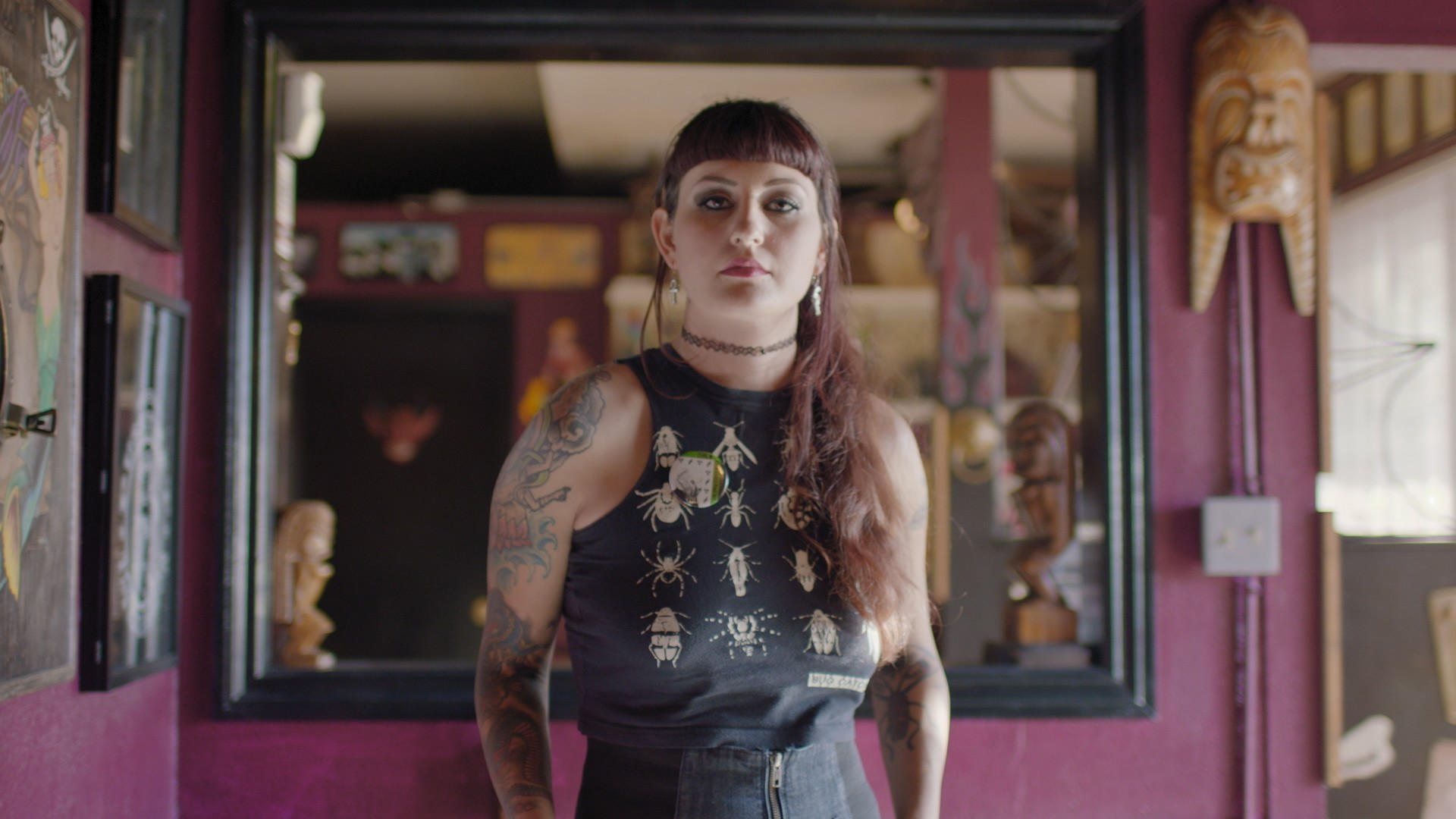Courtesy of Sheherzad Preisler
A friend has been scoping out tattoo designs but she's hesitant about inking up after seeing some price estimates for a trip to the parlor ($300 minimum hourly billing rate for JonBoy in New York? Ouch). She's done a couple of successful at-home ear piercings, so now she's scheming a DIY stick and poke tattoo from the comfort of her mothball-ridden couch. What better person to penetrate you with an inky needle than her best friend instead of a judgy tattooist? She's of legal age for a tat at a traditional parlor, but she confesses she'd prefer an at-home scenario complete with potential endorphins.Stick and pokes—homemade tattoos made by manually poking the skin—were the optimal way to ink up in jail, but have become trendier among college students and other frugal ink-lovers within the last five years. They are often completed using the "needle and thread tattoo technique," where a standard sewing needle is attached to something that makes it easier to hold, like a pencil. The poked designs often appear lighter than professional ones since the needle doesn't insert the ink in as deeply.The most infamous stick and poke blog (yes, a blog; this trend isn't exactly CDC approved) suggests inserting the needle right between the pencil's eraser and metal socket. A thread—sometimes dental floss—is then wound tightly around the needle. When the needle is dipped into the chosen ink (professional tattoo ink or India ink from a reputable craft store, of course), the thread contains that liquid, which drips into the skin as the needle presses and pricks down repeatedly, just a fraction of an inch into the skin.Numerous tutorials exist to demonstrate the technique for this artistic deed: One YouTube tutorial with more than three million views advised against sewing needles, instead suggesting tattoo needles from Amazon that are pre-sterilized, and ultra black tattoo ink available on eBay. So while not long ago this was super back alley, people are actually trying to make their DIY tats looks somewhat professional. And social media has also contributed to the digital community of experimental tattooers. Popular Instagram user Tealeigh, who hand-pokes tattoos in Brooklyn, has more than 100,000 followers (including Girls star Zosia Mamet), her designs ranging from reptiles and fruit to mushrooms and the Gibson Girl. It's hard not to scroll through these endless snaps of ornate tats and not experience a little ink envy.
Watch This on VICE:
Your skin is free of any open wounds and abrasions, so the tattoo shouldn't be an issue, right? Can she cue the sterilized-with-a-stovetop-flame needle? Or are the risks of poking away at your skin in an unregulated setting just too gnarly for the price?Stick and poke tattoos can carry some grisly risks, says Cameron Rokhsar, associate clinical professor of dermatology at Mount Sinai Hospital. His first worry with the method is infection from an unsanitary needle, which can lead to staph infections. "Staph infections are staph aureus—that's a bacteria that lives around us—and if the skin is broken, it can easily gain entrance into our soft tissue and cause a bacterial infection called cellulitis," he says. Cellulitis appears as a swollen, red area of skin that feels hot and tender, and the infection can spread rapidly to other parts of the body. Though it might only affect your skin's surface, it could get to tissues under the skin and spread to the lymph nodes and even your bloodstream.And if the poking needle is shared (cringing), Rokhsar says that contracting various bloodborne diseases becomes a possibility. "God forbid somebody's sharing that needle… Then you open this up to a whole host of communicable diseases like HIV, hepatitis B and hepatitis C," he says. Hepatitis B, for example, can be an acute, or short-term, illness, but for others, it can become a long-term, chronic infection that can lead to major health issues like cirrhosis or liver cancer. If the needle is rusty, Rokhsar adds that tetanus (while uncommon in the US) can be another risk.So your friend is taking note of best practices, and she's not recycling her needles, nor doodling with ballpoint pen ink, which "is not manufactured to be injected into the human body," Rokhsar says. Despite these precautions, she may still experience a more minor infection (compared to staph) or an allergic reaction. To be fair, Rokhsar says he's treated patients who've had infections and allergic reactions to the ink from both DIY tattoos and professionally done ones. These more easily treated symptoms can look like scabbing, redness and itchiness of the areas that have been tattooed.Infections can be treated with antibiotics, and allergic reactions can be treated with steroids, he says. In some instances, Rokhsar has lasered the tattoo away to ease the allergic reaction. Indeed, in 2015, researchers at NYU Langone Medical Center found that as many as 6 percent of adult New Yorkers who were inked have experienced some form of tattoo-related rash, severe itching or swelling that lasted longer than four months and, in some cases, for many years. But six percent is low, so your tat-fiending friend may very well not undergo any symptoms after her stick and poke tattoo. "Best case scenario is you've got a cheap tattoo," Rokhsar says. Good to know that even those who can afford JonBoy recognize the merit of a sweet deal.Read This Next: The People Who Make You Look Good are Suffering
Advertisement
What exactly is a stick and poke tattoo and how do they work?
How popular are they?
Advertisement

How risky is it to get a DIY stick and poke?
Advertisement